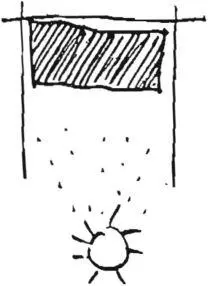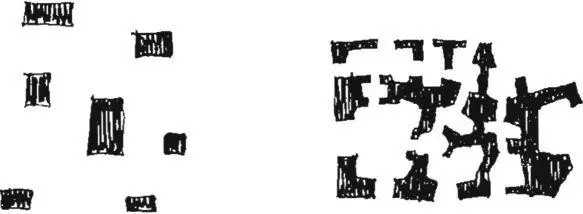Christopher alexander - A pattern language
Здесь есть возможность читать онлайн «Christopher alexander - A pattern language» весь текст электронной книги совершенно бесплатно (целиком полную версию без сокращений). В некоторых случаях можно слушать аудио, скачать через торрент в формате fb2 и присутствует краткое содержание. Жанр: Прочая научная литература, на английском языке. Описание произведения, (предисловие) а так же отзывы посетителей доступны на портале библиотеки ЛибКат.
- Название:A pattern language
- Автор:
- Жанр:
- Год:неизвестен
- ISBN:нет данных
- Рейтинг книги:3 / 5. Голосов: 1
-
Избранное:Добавить в избранное
- Отзывы:
-
Ваша оценка:
- 60
- 1
- 2
- 3
- 4
- 5
A pattern language: краткое содержание, описание и аннотация
Предлагаем к чтению аннотацию, описание, краткое содержание или предисловие (зависит от того, что написал сам автор книги «A pattern language»). Если вы не нашли необходимую информацию о книге — напишите в комментариях, мы постараемся отыскать её.
A pattern language — читать онлайн бесплатно полную книгу (весь текст) целиком
Ниже представлен текст книги, разбитый по страницам. Система сохранения места последней прочитанной страницы, позволяет с удобством читать онлайн бесплатно книгу «A pattern language», без необходимости каждый раз заново искать на чём Вы остановились. Поставьте закладку, и сможете в любой момент перейти на страницу, на которой закончили чтение.
Интервал:
Закладка:
Although the idea of south-facing open space is simple, it has great consequences, and there will have to be major changes in land use to make it come right. For example, residential neighborhoods would have to be organized quite differently from the way they are laid out today. Private lots would have to be longer north to south, with the houses on the north side.
 |
| Blocks reorganized to catch the sun. |
5 * 5
TOWNS
They cannot claim to have struck the balance between the needs of towns and communities, and the needs of the world community as a whole. Indeed, their tendency has been to override local needs and repress local culture, and at the same time aggrandize themselves to the point where they are out of reach, their power barely conceivable to the average citizen.
2. Unless a region has at least several million people in it, it will not be large enough to have a seat in a world government, and will therefore not be able to supplant the power and authority of present nation-states.
We found this point expressed by Lord Weymouth of Warminster, England, in a letter to the New York Times , March 15, 1973-
world FEDERATION: A THOUSAND STATES
. . . the essential foundation stone for world federation on a democratic basis consists of regionalization within centralized government. . . . This argument rests on the idea that world government is lacking in moral authority unless each delegate represents an approximately equal portion of the world’s population. Working backward from an estimate of the global population in the year 2000, which is anticipated to rise to the 10,000 million mark, I suggest that we should be thinking in terms of an ideal regional state at something around ten million, or between five and fifteen million, to give greater flexibility. This would furnish the U.N. with an assembly of equals of 1000 regional representatives: a body that would be justified in claiming to be truly representative of the world’s population.
Weymouth believes that Western Europe could take some of the initiative for triggering this conception of world government. He looks for the movement for regional autonomy to take hold in the European Parliament at Strasbourg; and hopes that power can gradually be transferred from Westminister, Paris, Bonn, etc., to regional councils, federated in Strasbourg.
I am suggesting that in the Europe of the future we shall see England split down into Kent, Wessex, Mercia, Anglia and Northumbria, with an independent Scotland, Wales and Ireland, of course. Other European examples will include Brittany, Bavaria and Calabria. The national identities of our contemporary Europe will have lost their political significance.
3. Unless the regions have the power to be self-governing, they
I 2
BUILDINGS
Note that this pattern was developed in the San Francisco Bay Area. Of course, its significance varies as latitude and climate change. In Eugene, Oregon, for example, with a rather rainy climate, at about $0° latitude, the pattern is even more essential: the south faces of the buildings are the most valuable outdoor spaces on sunny days. In desert climates, the pattern is less important; people will want to stay in outdoor spaces that have a balance of sun and shade. But remember that in one way or another, this pattern is absolutely fundamental.
Therefore:
Always place buildings to the north of the outdoor spaces that go with them, and keep the outdoor spaces to the south. Never leave a deep band of shade between the building and the sunny part of the outdoors.
building to the north
 |
outdoors south |
A *% • •
Let half-hidden garden (ill) influence the position of the outdoors too. Make the outdoor spaces positive—positive outdoor space (106)—and break the building into narrow wings —wings of light (107). Keep the most important rooms to the south of these wings—indoor sunlight (128) ; and keep storage, parking, etc, to the north—north face (162). When the building is more developed, you can concentrate on the special sunny areas where the outdoors and building meet, and make definite places there, where people can sit in the sun—sunny place (161). . . .
516
106 POSITIVE OUTDOOR SPACE**

. . . inmaking south facing outdoors(105) you must both choose the place to build, and also choose the place for the outdoors. You cannot shape the one without the other. This pattern gives you the geometric character of the outdoors; the next one— wings of light(107)—gives you the complementary shape of the indoors.
Outdoor spaces which are merely “left over” between buildings will, in general, not be used.
There are two fundamentally different kinds of outdoor space: negative space and positive space. Outdoor space is negative when it is shapeless, the residue left behind when buildings— which are generally viewed as positive—are placed on the land. An outdoor space is positive when it has a distinct and definite shape, as definite as the shape of a room, and w'hen its shape is as important as the shapes of the buildings w ;hich surround it. These two kinds of space have entirely different plan geometries, w'hich may be most easily distinguished by their figure-ground reversal.
 |
| Buildings that create negative , leftover space . . . buildings that create positive outdoor space. |
If you look at the plan of an environment where outdoor spaces are negative, you see the buildings as figure, and the outdoor space as ground. There is no reversal. It is impossible to see the outdoor space as figure, and the buildings as ground. If you look at the plan of an environment where outdoor spaces are positive, you may see the buildings as figure, and outdoor spaces as ground— and , you may also see the outdoor spaces as
106 POSITIVE OUTDOOR SPACE
figure against the ground of the buildings. The plans have figure-ground reversal.
Another way of defining the difference between “positive” and “negative” outdoor spaces is by their degree of enclosure and their degree of convexity.
 |
| Convex and nonconvex. |
In mathematics, a space is convex when a line joining any two points inside the space itself lies totally inside the space. It is nonconvex, when some lines joining two points lie at least partly outside the space. According to this definition, the following irregular squarish space is convex and therefore positive; but the L-shaped space is not convex or positive, because the line joining its two end points cuts across the corner and therefore goes outside the space.


Positive spaces are partly enclosed, at least to the extent that their areas seem bounded (even though they are not, in fact, because there are always paths leading out, even whole sides open), and the “virtual” area which seems to exist is convex. Negative spaces are so poorly defined that you cannot really tell where their boundaries are, and to the extent that you can tell, the shapes are nonconvex.
Читать дальшеИнтервал:
Закладка:
Похожие книги на «A pattern language»
Представляем Вашему вниманию похожие книги на «A pattern language» списком для выбора. Мы отобрали схожую по названию и смыслу литературу в надежде предоставить читателям больше вариантов отыскать новые, интересные, ещё непрочитанные произведения.
Обсуждение, отзывы о книге «A pattern language» и просто собственные мнения читателей. Оставьте ваши комментарии, напишите, что Вы думаете о произведении, его смысле или главных героях. Укажите что конкретно понравилось, а что нет, и почему Вы так считаете.












